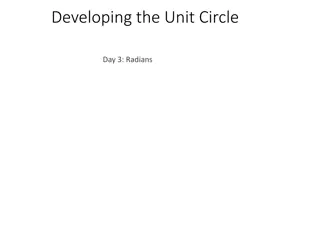
Enhancing HR Management with HRIS and Succession Planning Systems
Explore the role of Human Resource Information Systems (HRIS) in storing employee data, aiding decision-making, and complying with regulations. Learn about operational, strategic, and tactical HRIS to support various management decisions in an organization.
Download Presentation

Please find below an Image/Link to download the presentation.
The content on the website is provided AS IS for your information and personal use only. It may not be sold, licensed, or shared on other websites without obtaining consent from the author. If you encounter any issues during the download, it is possible that the publisher has removed the file from their server.
You are allowed to download the files provided on this website for personal or commercial use, subject to the condition that they are used lawfully. All files are the property of their respective owners.
The content on the website is provided AS IS for your information and personal use only. It may not be sold, licensed, or shared on other websites without obtaining consent from the author.
E N D
Presentation Transcript
Topic Topic Human resource information Human resource information system & succession planning system & succession planning
Human resource information system Human resource information system (HRIS) (HRIS) o Hris is a systematic way of storing data and information for each individual employee to aid planning, decision making and submitting of returns and reports to the external agencies. o A method by which an organization collects, analyses & reports the information about people and job.
Functions of HRIS Functions of HRIS Create and maintain employee records. Ensure legal compliance. Forecast and plan future HR requirements. Reduces the manual work. Assist managers by providing the relevant data.
Operational HRIS Operational HRIS Operational HRIS provides data to support routine and repetitive human resource decisions. Information is detailed , structured , accurate and internal.
Strategic HRIS Strategic HRIS Strategic HRIS helps top level managers to set goals and directions for organization. Gather and manage information from within and outside organization.
Tactical HRIS Tactical HRIS Supports management decisions emphasizing allocation of human resources. The decisions include recruitment decisions , job analysis and design decision , training and development , and employee compensation plan decisions.
Objectives Objectives To offer sufficient, comprehensive & on going information about people & jobs. To supply up to date information at a reasonable cost. To offer data security & personal privacy. Availability of timely and accurate information about human assets.
Advantages Advantages Accuracy : if HR has to transfer information between multiple software systems and paper files , error inevitably creep in . Using one single system eliminates that problem. Security : paper files are easy to access , even by people who have no right to the information. HRIS can restrict access to those who need to know. Saving time : accrued time off and the unused balance are easier and faster to track and adjust with a computer than with a spreadsheet.
Compliance : good HRIS vendors keep the software updated to comply with relevant government regulations. Improves productivity : it improves productivity related to financial management through payroll processing tasks and benefits administration.
Disadvantages Disadvantages Human error during information input. Costly technology to update your system. Finding a qualified specialist with human resources functional area knowledge is difficult. Unauthorized access. Data entry errors. Lack of communication.
Steps in planning Inception of idea Feasibility study Selecting a project team. Steps in analysis Defining the requirement Contract negotiations Steps in designing Examines the flow of information Identification of gaps and outlines
Steps in implementing Training Implementing Collecting the data Testing the system Starting up Steps in maintenance Maintaining of HRIS Auditing
Example Example : HRIS in hospitals Low resource countries face difficulties in meeting the health care needs of their people. For eg. countries in sub Saharan Africa suffer from 24% of the global disease burden , but have only three percent of the global health workforce to provide necessary services. Routine and accurate HRIS data helps to deploy the right health workers in the right places to meet the health care needs.
HRIS can be used to standardize and support ongoing management and support of health workforce. Capacity Plus Inc, Intrahealth international are some of the HRIS software used in healthcare industry.
Succession planning Succession planning Succession planning is defined as a method for identifying and developing people within an organization that has the potential to be able to fill leadership positions in the company. It specially focuses on ensuring the availability and sustainability of supply of capable staff that are ready to assume key or critical organizational roles as they become available.
What is succession planning? What is succession planning? Succession planning is the process of training and preparing employees in an organization so that there will always be someone to replace an employee who leaves.
Reason for succession planning Reason for succession planning Identify highly talented individuals. Promoting employee development. Refining corporate planning. Establishing the talent pool. Ensuring the organization is prepared with a support plan when key people leave.
Advantages of succession planning Advantages of succession planning Business is prepared for the immediate loss of a key employee. Employees selected are continually trained and developed. Defined career paths , which will help the company recruit and retain better people. Retention of knowledge of business practices.
Disadvantages of succession planning Disadvantages of succession planning Appointing the wrong person can lead to a variety of problems that result in poorer company performance and turnover. A poorly conducted succession planning process will lead to poor decisions , disharmony and ultimately poor company performance as well.
Succession planning process Succession planning process 1.Review plans and identify key positions: The first step in succession planning is to identify current or future key positions or groups in the organization. 2. Listing the competencies: All positions require a particular set of skills, abilities and knowledge. Therefore, find & list the employees who are perfectly suitable for the corresponding job role.
3. Identifying and helping potential candidates: This step is similar to general job recruitment practice. But it goes one step ahead by helping candidates who show great interest in developing the requisite skills for the particular position. 4. Developing plans: Once organization found the relevant candidate suitable for the role, based on their potential for success and interest in a key position, the organization should ensure that these employees have access to development opportunities & learning tools.
5. Implementing the process: The final step is to implement and evaluate the process. You have to plan the activities and inputs you have to get the desired outputs. Every step in this process has to be evaluate to measure the success and progress of the plan.
Conclusion Conclusion HRIS is the systematic way of storing data and information for planning, decision making & preparing reports. Succession planning is the development of potential successor in an organization.
THANK YOU THANK YOU






















